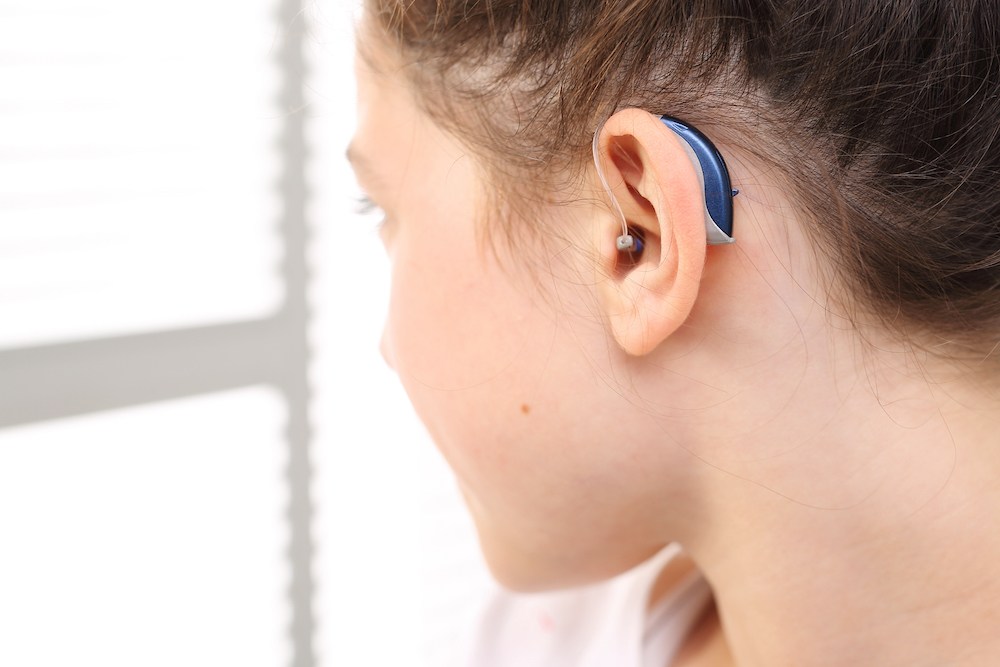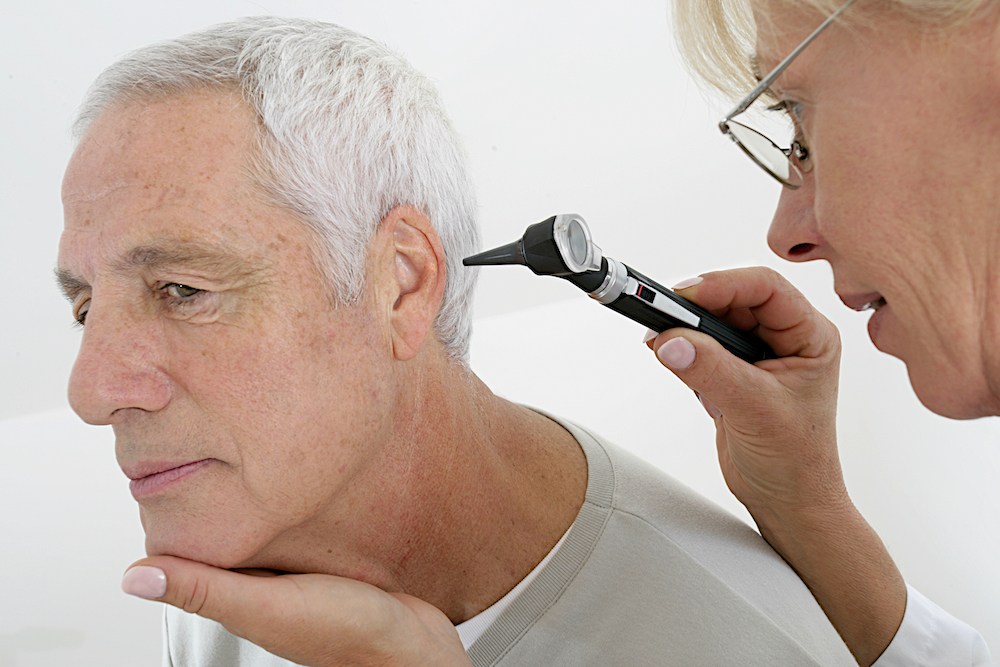Hearing Aids for Musicians: Specialized Features
Musicians rely on precise hearing to identify pitch, separate instruments
Fill your holidays with the sound of laughter and don’t miss any of these magical moments. Schedule Today! →

By: admin | March 21, 2025
Do you find yourself leaning in during conversations lately? Maybe you’ve started watching TV with closed captions, or you feel left out at social gatherings where everyone seems to be laughing at jokes you didn’t quite catch. These are common experiences that signal hearing changes – changes that often arrive without announcement in our senior years.
Many people in their 60s and beyond start missing certain sounds without realizing it. You might hear the mail carrier’s deep voice perfectly while missing your grandchild’s higher-pitched questions. Phone conversations become puzzling when you can hear perfectly in person but struggle to follow along without facial cues. Family members often notice first – they see you nodding along in conversations where you’re actually missing every third word.
The impact of hearing loss extends far beyond just missing sounds. It can lead to feeling isolated at family dinners, avoiding your weekly coffee dates with friends or even experiencing balance issues as your brain receives less spatial information. Many seniors put off hearing tests for years, believing their hearing “isn’t that bad yet” or that hearing aids are only for “old people” – when in reality, addressing hearing loss early helps maintain brain health and social connections.
Testing is simpler than most people expect – a quick assessment that can reveal exactly which sounds you’re missing and how modern solutions might help. Getting tested isn’t about admitting defeat; it’s about choosing to stay engaged with the people and activities that matter most to you.
Age-related hearing loss, also known as presbycusis, is a gradual decline in hearing ability that typically occurs as people get older. It is one of the most common types of hearing loss and affects a significant portion of the aging population. This condition is primarily due to the natural aging process, with changes in the structures and functions of the inner ear and auditory system over time.
The cause of presbycusis is multifactorial, involving a combination of genetic factors, environmental influences and the wear and tear that naturally occurs as we age. The most common changes include damage to the hair cells in the cochlea (the part of the inner ear responsible for converting sound waves into electrical signals), stiffening of the ear’s structures and a decline in the efficiency of the auditory nerve. As a result, the brain has a harder time processing and interpreting sounds, especially higher-frequency noises like birds chirping or the consonants in speech.
While the degree of hearing loss varies from person to person, age-related hearing loss typically affects both ears equally. This type of hearing loss is usually permanent but can be managed with hearing aids or other assistive listening devices to improve communication and overall quality of life.
The symptoms of hearing loss in older individuals can be subtle and may slowly develop over time, which can make them easy to overlook. However, knowing these early signs can prompt you to seek professional help sooner. Maybe you find it hard to follow conversations when there’s background noise or when several people are talking at once. Perhaps you’re asking others to repeat themselves more often or turning up the volume on your TV or radio. You might even be experiencing a persistent ringing sound in your ears, or sounds seem muffled and less clear than they used to be.
Don’t brush these signs off as they could be the first signs of hearing loss. If you notice any changes in your hearing abilities, it’s advised to book an appointment with a hearing specialist right away. They can carry out comprehensive tests to see if there’s a drop in your hearing function and suggest suitable treatment measures if needed.
Being prepared for your hearing assessment can make your visit to the hearing specialist more productive and less stressful. Here are a few tips to help you prepare:
When you visit a hearing specialist, the first part of your appointment will likely involve a conversation about your hearing health and any concerns you may have. The specialist will ask detailed questions about your medical history, including any past ear infections, injuries or family history of hearing loss. They may also inquire about your lifestyle, like exposure to loud noises, and how your hearing has been affecting your daily life. This helps them understand the context of your hearing difficulties and any potential contributing factors.
The specialist will also take time to understand your symptoms in more detail. For example, they may ask how long you’ve been experiencing hearing difficulties, whether certain situations make hearing harder (like in noisy environments), and if you’ve noticed any balance issues or other related symptoms. This information will guide the specialist in deciding what steps to take next in your hearing care. They may offer advice on lifestyle changes, like protecting your hearing from further damage, and may discuss the potential need for hearing aids or other devices depending on your needs. Throughout the visit, the specialist’s goal is to make sure you feel comfortable and informed before moving forward with any testing or treatment recommendations.
This basic procedure is crucial to understanding your current level of hearing and spotting any potential changes. So, what exactly is a pure-tone test? In simple terms, it’s a type of hearing test that measures how well you can hear sounds at different pitches and volumes. During this test, you’ll wear headphones and listen to a series of tones played at various frequencies. Each time you hear a tone, you’ll signal the hearing specialist.
The goal here isn’t just to identify any loss in your hearing ability but also to pinpoint the exact frequency where the loss occurs. This information is invaluable for creating an effective treatment plan tailored specifically for your needs.
You can relax, this test is completely painless and non-invasive. The purpose is purely diagnostic – helping your hearing specialist understand more about your hearing health so they can provide the best possible care for you.
This assessment checks how well you can understand speech in noisy environments, a common difficulty for many experiencing changes in hearing. This type of test is key as it mirrors real-life situations where background noise can interfere with your ability to understand conversations. The results give valuable insights to your hearing specialist, guiding them in customizing a treatment plan that best suits your needs.
This unique form of testing gives a different perspective on your hearing abilities, providing valuable insight into how your hearing system works.
This test is a simple yet effective way to check how your middle ear is functioning. Please avoid eating or drinking anything cold for at least an hour before the test as it can affect the results.
Tympanometry has several advantages, such as detecting fluid in the middle ear, perforated eardrum or wax blockage – conditions that could potentially impact your hearing. However, it’s important to note that while this test provides valuable information about your middle ear health, it doesn’t measure hearing sensitivity and cannot determine whether you have normal hearing or some degree of hearing loss. For this reason, tympanometry is usually performed alongside other tests for a comprehensive evaluation of your auditory health.
Once the hearing test is complete, your hearing specialist will go over the results with you in detail. The results are usually presented in the form of an audiogram, a visual representation of your hearing ability across different frequencies. The audiogram shows the softest sounds you can hear at various pitches, with low-frequency sounds on the left and high-frequency sounds on the right. If your hearing falls within a certain range on the graph, it indicates normal hearing, while a shift toward the higher numbers typically suggests some degree of hearing loss.
The specialist will explain the severity of the loss, whether it’s mild, moderate, severe or profound, and how it might impact your daily life. They will also discuss the specific frequencies affected, as some types of hearing loss impact higher or lower frequencies more than others.
Hearing aids are one of the most common treatments for hearing loss, especially when the loss is gradual, as in age-related or noise-induced hearing loss. These devices amplify sounds, making it easier to hear conversations and everyday noises. Modern hearing aids are highly customizable, with different types and settings to suit individual needs. Some can even adapt automatically to different listening environments, improving clarity in noisy places. A hearing specialist will work with you to choose the right hearing aid based on your specific hearing needs, preferences and lifestyle.
Hearing loss can have a subtle impact on daily life, often creeping in unnoticed until it starts to affect communication and overall well-being. By recognizing the early signs and seeking help, you can take important steps toward maintaining your hearing health and staying engaged with the world around you. A hearing test is an easy and insightful way to understand where your hearing stands, and when needed, treatments like hearing aids can make a significant difference.
The team at ClearSound Solutions in Lansing, MI is here to support you every step of the way! If you’ve noticed changes in your hearing or it’s time for your regular check-up, feel free to reach out. You can contact our team at (517) 318-2572 to schedule an appointment for you or an elderly loved one! We look forward to helping you hear better!
Tags: audiogram, speech tests, tympanometry

Musicians rely on precise hearing to identify pitch, separate instruments
By: admin | November 18, 2025

Outdoor activities often require careful preparation, from packing the
By: admin | August 21, 2025

As new parents, you’re juggling countless responsibilities and
By: admin | April 24, 2025
